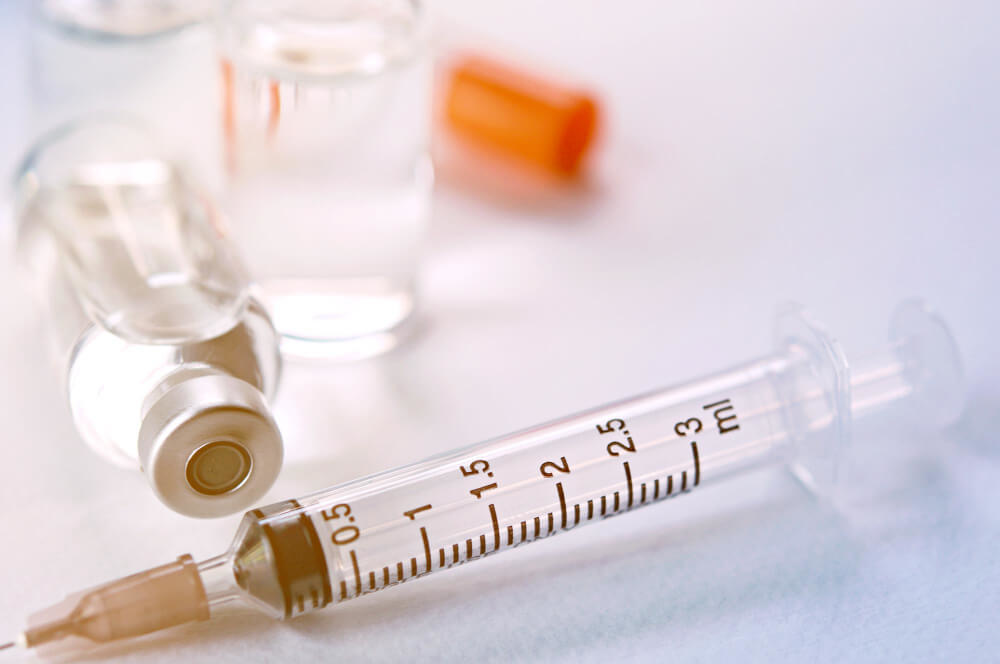Hormone Training: The Ultimate Guide to Rebalancing Your Body for Optimal Health
Have you ever felt like you’re doing everything right with your diet and exercise, yet you still struggle with fatigue, mood swings, or stubborn weight? The culprit might not be your effort but a hidden imbalance within your body’s intricate communication network: your hormones. These powerful chemical messengers control nearly every aspect of your well being, from your energy levels and metabolism to your mood and sleep quality. When they are out of sync, the effects can be felt system-wide.
This is where a strategic approach becomes essential. Instead of generic fitness plans, imagine tailoring your lifestyle to speak directly to your endocrine system, encouraging it to find its natural equilibrium. This concept is the foundation of a revolutionary approach to wellness that empowers you to work with your body, not against it. By understanding how to influence these crucial signals, you can unlock a new level of vitality.
Welcome to the world of Hormone Training, a method that uses targeted exercise, nutrition, and lifestyle strategies to optimize your hormonal health. It’s about moving beyond simply burning calories and instead focusing on the specific hormonal responses your activities trigger. This guide will walk you through the principles of this transformative practice, helping you understand your body on a deeper level and take control of your health journey.

What Are Hormones and Why Do They Matter?
To understand hormone training, you first need to appreciate the power of hormones themselves. Think of them as the body’s internal postal service, delivering critical messages from glands to organs and tissues. This network, called the endocrine system, includes the thyroid, adrenal glands, pancreas, and reproductive organs, all working in a delicate symphony.
Key hormones like cortisol manage your stress response, insulin regulates your blood sugar, and thyroid hormones control your metabolism. Estrogen, progesterone, and testosterone, often called sex hormones, do much more than govern reproduction; they impact bone density, muscle mass, and mental clarity. When all these messengers are produced in the right amounts and at the right times, you feel vibrant, energetic, and resilient.
However, when even one hormone is out of balance, it can create a domino effect, disrupting the entire system. This imbalance can manifest as persistent fatigue, anxiety, weight gain, brain fog, or poor sleep. The goal is not to eliminate any single hormone but to foster a state of harmonious balance where your body can function at its peak.

How Can Lifestyle Impact Your Hormones?
Your daily choices are the most powerful tools you have for influencing your hormonal landscape. The food you eat provides the building blocks for hormone production. The quality and quantity of your sleep directly affect your body’s ability to regulate stress hormones like cortisol. And perhaps most dynamically, the way you move your body can either soothe or disrupt your endocrine function.
Chronic stress, a hallmark of modern life, is a primary antagonist to hormonal harmony. It keeps cortisol levels perpetually high, which can interfere with insulin sensitivity, suppress thyroid function, and throw sex hormones out of whack. This is why a holistic approach that considers diet, exercise, sleep, and stress management is the only effective path to sustainable hormonal health.
Exercise, in particular, is a double-edged sword. The right type and amount of physical activity can dramatically improve insulin sensitivity, boost mood-lifting endorphins, and support healthy testosterone levels. Conversely, the wrong kind of exercise, or simply too much of it, can become another source of chronic stress, further taxing your system. This is the central premise we will explore.

What Is the Connection Between Exercise and Hormones?
Every time you work out, you trigger a cascade of hormonal responses. Some of these changes are immediate and short-lived, while others have long-term adaptive effects. The type, intensity, and duration of your exercise determine which hormones are released and in what quantities. Understanding this relationship is the key to making your workouts work for you on a hormonal level.
For instance, a high-intensity session will spike cortisol and adrenaline to mobilize energy, but in a healthy, short-term way that your body is designed to handle. Over time, consistent training helps your body become more efficient at managing this stress response. This is fundamentally different from the chronic, low-grade stress of a demanding job or poor sleep, which offers no physical release or recovery.
Learning how exercise affects your hormones is about recognizing that different activities serve different purposes. A gentle walk has a different hormonal signature than a heavy weightlifting session, and both are different from a long-distance run. The art of hormone training lies in strategically deploying these different stimuli to achieve a desired outcome, whether that’s building muscle, reducing stress, or improving metabolic health.

How Does Strength Training Affect Hormones?
Resistance or strength training is a cornerstone of hormone optimization for several reasons. Lifting heavy weights, particularly with compound movements like squats, deadlifts, and presses, places a significant demand on your muscles. This stimulus encourages the release of powerful anabolic hormones, namely testosterone and human growth hormone (HGH).
Testosterone is crucial for both men and women for maintaining muscle mass, bone density, and a healthy libido. HGH plays a vital role in cellular repair and regeneration. By engaging in regular strength training, you naturally support your body’s production of these vital hormones, which tend to decline with age. This helps preserve lean body mass, which in turn keeps your metabolism fired up.
Furthermore, strength training is one of the most effective ways to improve insulin sensitivity. During a workout, your muscles become hungry for glucose, pulling it from the bloodstream without needing much insulin. This effect can last for hours after your session, helping your body manage blood sugar more effectively and reducing the risk of insulin resistance, a precursor to many chronic diseases.

What Is the Role of Cardiovascular Exercise?
Cardiovascular exercise, or cardio, also plays a critical role, but its hormonal impact depends heavily on the type and intensity. Low-intensity steady-state (LISS) cardio, like brisk walking, cycling, or swimming at a conversational pace, is fantastic for stress management. It helps lower circulating cortisol levels and promotes a state of calm in the nervous system.
This form of movement is an excellent tool for active recovery and for individuals who are already under a great deal of life stress. In fact, many experts agree that exercise is a vital tool for stress relief, primarily through its ability to moderate cortisol and boost mood-enhancing endorphins. It doesn’t tax the body excessively, making it a sustainable practice for hormonal balance.
High-Intensity Interval Training (HIIT), on the other hand, involves short bursts of all-out effort followed by brief recovery periods. Like strength training, HIIT is a potent stimulus for improving insulin sensitivity and can trigger a significant HGH release. However, because it is highly demanding, it must be used judiciously. Too much HIIT without adequate recovery can backfire, leading to elevated cortisol and burnout.

Can You Overtrain and Disrupt Your Hormones?
Absolutely. While exercise is beneficial, more is not always better. Overtraining syndrome is a real condition where the body is pushed beyond its ability to recover. This state of chronic physical stress can wreak havoc on your endocrine system. One of the first casualties is often the delicate balance of the hypothalamic-pituitary-adrenal (HPA) axis, the body’s central stress response system.
When you consistently overdo it, especially with high-intensity or long-duration endurance exercise, without enough rest and fuel, cortisol can become chronically elevated. This can lead to a host of problems, including suppressed immune function, sleep disturbances, and a breakdown of muscle tissue. It can also suppress the production of reproductive hormones, sometimes leading to irregular cycles in women or low testosterone in men.
Listening to your body is paramount. Signs of overtraining include persistent muscle soreness, a decline in performance, elevated resting heart rate, irritability, and nagging fatigue. Understanding the fine line between a healthy training stimulus and overexertion is crucial, as the goal is to use exercise as a tool to build resilience, not to tear your body down. The relationship between exercise and hormones is a delicate balance that requires mindful application.

How Can Women Sync Their Workouts with Their Menstrual Cycle?
For menstruating women, hormone training can be taken to the next level by aligning workouts with the natural fluctuations of the menstrual cycle. This practice, known as cycle syncing, acknowledges that your energy, strength, and recovery potential change throughout the month.

What Should You Do in the Follicular and Ovulatory Phases?
The first half of your cycle, from your period to ovulation (the follicular and ovulatory phases), is characterized by rising estrogen levels. This typically translates to higher energy, better insulin sensitivity, and increased pain tolerance. This is the ideal time to push yourself with heavier strength training and incorporate high-intensity interval training. Your body is primed for performance and can recover more efficiently.

How Should You Train in the Luteal and Menstrual Phases?
After ovulation, the luteal phase begins, marked by a rise in progesterone. Progesterone has a calming, slightly catabolic effect, and your body temperature is higher. Many women notice a dip in energy and may feel less powerful. This is a good time to scale back the intensity. Focus on moderate-volume strength training, LISS cardio, and mobility work. During your menstrual phase, when hormones are at their lowest, prioritize rest and gentle movement like yoga, stretching, and walking.

What About Hormone Training for Men?
While men don’t have a monthly cycle, they do experience hormonal fluctuations, including a daily cortisol and testosterone rhythm. For men, hormone training primarily focuses on strategies to naturally support testosterone and HGH while effectively managing cortisol. The foundation of this approach is consistent, heavy compound lifting.
Exercises like squats, deadlifts, bench presses, and overhead presses, which engage multiple large muscle groups, provide the most potent stimulus for testosterone release. Complementing this with strategic HIIT sessions once or twice a week can further enhance HGH production and improve cardiovascular health. However, recovery is just as important as the training itself.
Chronic stress and poor sleep are notorious for crushing testosterone levels by keeping cortisol high. Therefore, a man’s hormone training plan must include adequate sleep, stress-management practices like meditation or breathwork, and deload weeks where training intensity is reduced to allow the body to fully recover and supercompensate.

How Does Hormone Training Adapt for Perimenopause and Menopause?
As women approach perimenopause and menopause, the hormonal landscape shifts dramatically. Fluctuating and then declining levels of estrogen and progesterone bring about a new set of challenges, including loss of muscle mass, decreased bone density, and changes in body composition, particularly an increase in visceral fat.
During this life stage, strength training becomes non-negotiable. It is the single most effective tool to combat sarcopenia (age-related muscle loss) and osteoporosis (bone loss). Building and maintaining muscle helps keep metabolism high and improves insulin sensitivity, which can become more challenging as estrogen declines. For those considering or currently on hormone replacement, finding the right exercise and hormone replacement therapy (HRT) balance is key to maximizing the benefits of both.
Intense, cortisol-spiking workouts may need to be used more sparingly. The focus should shift to consistent strength training two to three times per week, combined with regular low-intensity cardio and restorative practices like yoga and walking. Prioritizing sleep and managing stress become even more critical to buffer the adrenal glands and support overall well being during this transition.

When Should You Seek Professional Guidance?
While hormone training through lifestyle modifications is incredibly powerful, it is not a substitute for medical care. If you are experiencing persistent and debilitating symptoms, it is essential to work with a qualified healthcare professional. Symptoms like extreme fatigue, rapid or unexplained weight changes, severe hair loss, heart palpitations, or profound mood shifts warrant a thorough investigation.
A knowledgeable practitioner can order comprehensive lab tests to get a clear picture of your hormonal status. This data provides a crucial baseline and can help identify underlying conditions that require medical intervention, such as thyroid disorders, adrenal dysfunction, or polycystic ovary syndrome (PCOS). Self-diagnosing can be misleading and may delay proper treatment.

What Advanced Knowledge Do Practitioners Need?
Effectively diagnosing and managing hormonal imbalances requires a deep and nuanced understanding of the endocrine system that goes far beyond standard medical training. The intricate feedback loops and interconnections between different hormones mean that a problem in one area can manifest as a symptom somewhere else entirely. This complexity demands specialized education.
For instance, general practitioners are often the first point of contact for patients with hormonal complaints. To serve these patients effectively, they can benefit greatly from an advanced course in clinical endocrinology for GPs, which equips them with the sophisticated knowledge needed to interpret complex lab results and create holistic treatment plans.
Specific conditions often require even more specialized expertise. The thyroid, for example, is notoriously complex, and conventional treatment models may not be sufficient for all patients. Clinicians who wish to truly master this area must learn about advanced testing and management through dedicated thyroid optimization protocols for clinicians to provide the best possible outcomes.
Similarly, conditions that are often misunderstood or misdiagnosed, like early menopause, demand a high level of clinical acumen. Proper Premature Ovarian Insufficiency (POI) diagnosis and management requires a specific skill set to ensure patients receive timely and appropriate care, support, and guidance. This advanced training is what separates a standard approach from a truly optimized one.

How Does Nutrition Support Hormone Balance?
Exercise is only one piece of the puzzle; you cannot out-train a poor diet. Nutrition provides the raw materials your body needs to manufacture hormones. Healthy fats, for example, are the building blocks of steroid hormones like estrogen and testosterone. Sources like avocados, nuts, seeds, and olive oil are essential.
Adequate protein intake is critical for muscle repair, blood sugar stability, and the production of peptide hormones. Complex carbohydrates from sources like sweet potatoes, quinoa, and vegetables provide sustained energy and support thyroid function, as severely restricting carbs can sometimes downregulate thyroid hormone conversion.
Micronutrients also play a starring role. Magnesium is involved in hundreds of enzymatic reactions and helps calm the nervous system. Zinc is crucial for thyroid health and testosterone production. Vitamin D, which is actually a pro-hormone, is vital for immune function and overall hormonal signaling. A nutrient-dense, whole-foods diet is the foundation of any successful hormone training plan.

Why Is Sleep Non-Negotiable for Hormonal Health?
Sleep is when your body does its most important hormonal repair work. It is during the deep stages of sleep that your body releases the majority of its daily growth hormone, which is essential for tissue regeneration. A single night of poor sleep can disrupt this process and leave you feeling rundown.
Furthermore, sleep deprivation is a major physiological stressor that directly impacts your cortisol rhythm. When you don’t get enough quality sleep, your morning cortisol level can be blunted while your evening cortisol can be elevated, leaving you feeling tired but wired. This dysregulation also impairs insulin sensitivity, making you more prone to blood sugar swings and cravings the next day.
Aiming for seven to nine hours of high-quality sleep per night is one of the most impactful things you can do for your hormones. This means practicing good sleep hygiene: creating a dark, cool, and quiet environment, avoiding screens before bed, and establishing a consistent sleep-wake cycle, even on weekends.

What Are Effective Stress Management Techniques?
Since chronic stress is a primary driver of hormonal chaos, actively managing it is a core tenet of hormone training. While exercise is a great outlet, it’s important to have other tools in your toolbox that don’t involve physical exertion. These practices help shift your nervous system out of the ‘fight or flight’ sympathetic state and into the ‘rest and digest’ parasympathetic state.
Techniques like mindfulness meditation, even just for a few minutes a day, have been shown to lower cortisol and reduce the brain’s reactivity to stress. Diaphragmatic breathing, or belly breathing, is another powerful and simple tool that can instantly calm your nervous system. Spending time in nature, journaling, or engaging in a creative hobby can also have profound stress-reducing effects.
The goal is to make these practices a regular part of your routine, not just something you turn to when you’re already overwhelmed. By proactively managing your stress, you create a physiological environment where your hormones can thrive and your body can find its natural, healthy balance.
Your body possesses an incredible capacity for healing and rebalancing. Hormone training is not about a quick fix or an extreme regimen; it’s about developing a deeper conversation with your body. It’s about listening to its signals and responding with smart, strategic choices that nourish your endocrine system from the inside out.
By integrating targeted exercise with supportive nutrition, restorative sleep, and mindful stress management, you can take the driver’s seat on your health journey. This personalized and holistic approach empowers you to cultivate resilience, unlock lasting energy, and build a body that feels as good as it looks, at every stage of life.
Frequently Asked Questions

What are the first signs of a hormonal imbalance affecting my metabolism, and when should I see a doctor?
Early signs of a hormonal imbalance can be subtle and are often mistaken for the effects of a busy lifestyle. You might notice persistent fatigue even with enough sleep, unexplained weight gain or difficulty losing weight, and intense cravings for sugar or carbohydrates. Other key indicators include increased irritability, mood swings, and changes in your appetite or digestion.
If these symptoms persist for more than a few weeks despite your best efforts with diet and exercise, it is wise to consult a healthcare professional. A doctor can assess your complete clinical picture and, if necessary, order blood tests to measure levels of key hormones like thyroid hormones, cortisol, and insulin. This is crucial for ruling out underlying medical conditions and getting an accurate diagnosis.

Can I rebalance my metabolic hormones through diet and exercise alone?
For many individuals, lifestyle modifications are the most powerful tool for rebalancing metabolic hormones and improving weight management. Consistently eating a whole-foods diet rich in protein, fiber, and healthy fats helps regulate insulin and appetite hormones like ghrelin and leptin. Similarly, a combination of regular cardiovascular exercise and strength training can significantly improve insulin sensitivity and reduce stress hormones.
However, diet and exercise may not be sufficient in all cases, especially if there is an underlying medical condition like a thyroid disorder or PCOS. If you have implemented consistent, healthy lifestyle habits for several months without seeing improvement, medical guidance is essential. A professional can help identify deeper issues and create a more comprehensive treatment plan that may include targeted therapies in addition to lifestyle changes.

Why does chronic stress seem to cause weight gain, especially around the belly?
Chronic stress triggers a continuous release of the hormone cortisol, which disrupts your body’s natural metabolic processes. Elevated cortisol increases appetite and drives cravings for high-calorie, high-sugar foods, providing a quick but temporary energy boost. This hormonal signal also encourages the body to conserve energy by storing it as fat, preparing for a perceived, ongoing threat.
Cortisol has a particularly strong effect on fat storage in the abdominal area, leading to an accumulation of visceral fat around your organs. This type of fat is metabolically active and is strongly linked to an increased risk of insulin resistance and other health issues. Therefore, managing stress through techniques like mindfulness, adequate sleep, and gentle exercise is a critical strategy for controlling cortisol and supporting a healthy metabolism.
Are you ready to elevate your practice and lead the future of health? Discover the most comprehensive functional medicine training, longevity training, and biohacking certification programs designed specifically for healthcare professionals, medics, and clinic owners who want to master regenerative medicine protocols and anti-aging therapies. Join us at Talking Longevity and transform your ability to deliver life-changing results.







